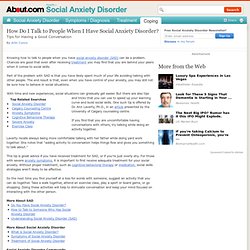

Clear Communication: How to Improve Speech and Pronuciation. Develop a Better Speaking Voice. Public Speaking - How To Articulate. Overcoming Sluggish Articulation. How to speak clearly. Speech lesson 1 Speech Problem of Enunciation. Speech Skill: Clarity See a full list of speech skills and definitions.

Welcome to the Speak for Success communication course. This speech lesson, like all the lessons in the course, follows a format that explains the speech problem and presents several exercises so you can work on the problem. Each lesson closes with a homework assignment designed to provide further practice eliminating or correcting the speech problem that you’re working with that particular week.
To get the most out of this course, you need to follow the program, working on only one lesson each week and completing all the exercises and homework assignments. Ready? The Speech Problem For listeners, one of the most irritating speech habits is a speaker that doesn’t enunciate clearly. Dropping “g”s is one of the most common examples of poor enunciation. Going Walking Jogging Thinking Striking Selling Did you say “go-ing” or did you say “go-in”?
Be warned; this was not a fair test. Say these sentences out loud: Speech Pathology: Why it's necessary. Because all communication disorders carry the potential to isolate individuals from their social and educational surroundings, it is essential to provide help and support as soon as a problem is identified.

Voice disorders may sometimes be divided into organic and functional disorders. Organic disorders are due to physical diseases like cancer and tumors that affect the way the vocal folds work. Functional disorders are due to the misuse and abuse of voice. Frequently, however, the cause is unknown, which often calls for the support of a speech pathologist. While many speech and language patterns can be called “baby talk” and are part of children’s normal development, they can become problems if they are not outgrown as expected. There are three parts to the voice — phonation, loudness and pitch, and resonance.
How to Talk to People - Social Anxiety and How to Talk to People. Knowing how to talk to people when you have social anxiety disorder (SAD) can be a problem.

Chances are good that even after receiving treatment you may find that you are behind your peers when it comes to social skills. Part of the problem with SAD is that you have likely spent much of your life avoiding talking with other people. The end result is that, even when you have control of your anxiety, you may still not be sure how to behave in social situations. With time and new experiences, social situations can gradually get easier. But there are also tips and tricks that you can use to speed up your learning curve and build social skills. If you find that you are uncomfortable having conversations with others, try talking while doing an activity together. Laverty recalls always being more comfortable talking with her father while doing yard work together. This tip is great advice if you have received treatment for SAD, or if you're just overly shy. 4 Magic Phrases You Can Use to Respond to ANYTHING.
Sing - Learn to Sing: Breathing. Sing - Learn to Sing: Find Your Voice. Sing - Learn to Sing: Articulation. How To Sing - The Basics Of How To Sing Better. Singing 102 - How To Sing Low Notes. Persuasive speech: The way we, um, talk sways our listeners. Public release date: 14-May-2011 [ Print | E-mail Share ] [ Close Window ] Contact: Diane Swanbrowswanbrow@umich.edu 734-647-9069University of Michigan ANN ARBOR, Mich.

---Want to convince someone to do something? A new University of Michigan study has some intriguing insights drawn from how we speak. The study, presented May 14 at the annual meeting of the American Association for Public Opinion Research, examines how various speech characteristics influence people's decisions to participate in telephone surveys.
"Interviewers who spoke moderately fast, at a rate of about 3.5 words per second, were much more successful at getting people to agree than either interviewers who talked very fast or very slowly," said Jose Benki, a research investigator at the U-M Institute for Social Research (ISR). For the study, Benki and colleagues used recordings of 1,380 introductory calls made by 100 male and female telephone interviewers at the U-M ISR. "People who pause too much are seen as disfluent. Persuasive speech: The way we, um, talk sways our listeners.